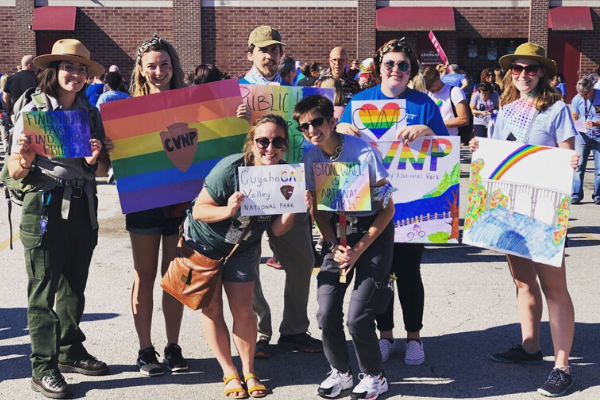Every June, the LGBTQ+ community celebrates Pride Month in honor of the 1969 Stonewall Uprising in Manhattan. This event was a major turning point as it inspired wider visibility and acceptance of people who identified outside of the norms of society.
The history of the LGBTQ+ community is entwined in the fabric of our country—including our National Park Sites. Let’s celebrate pride by looking at some of the well-known, and lesser-known, people and places that became a crucial part of that history.
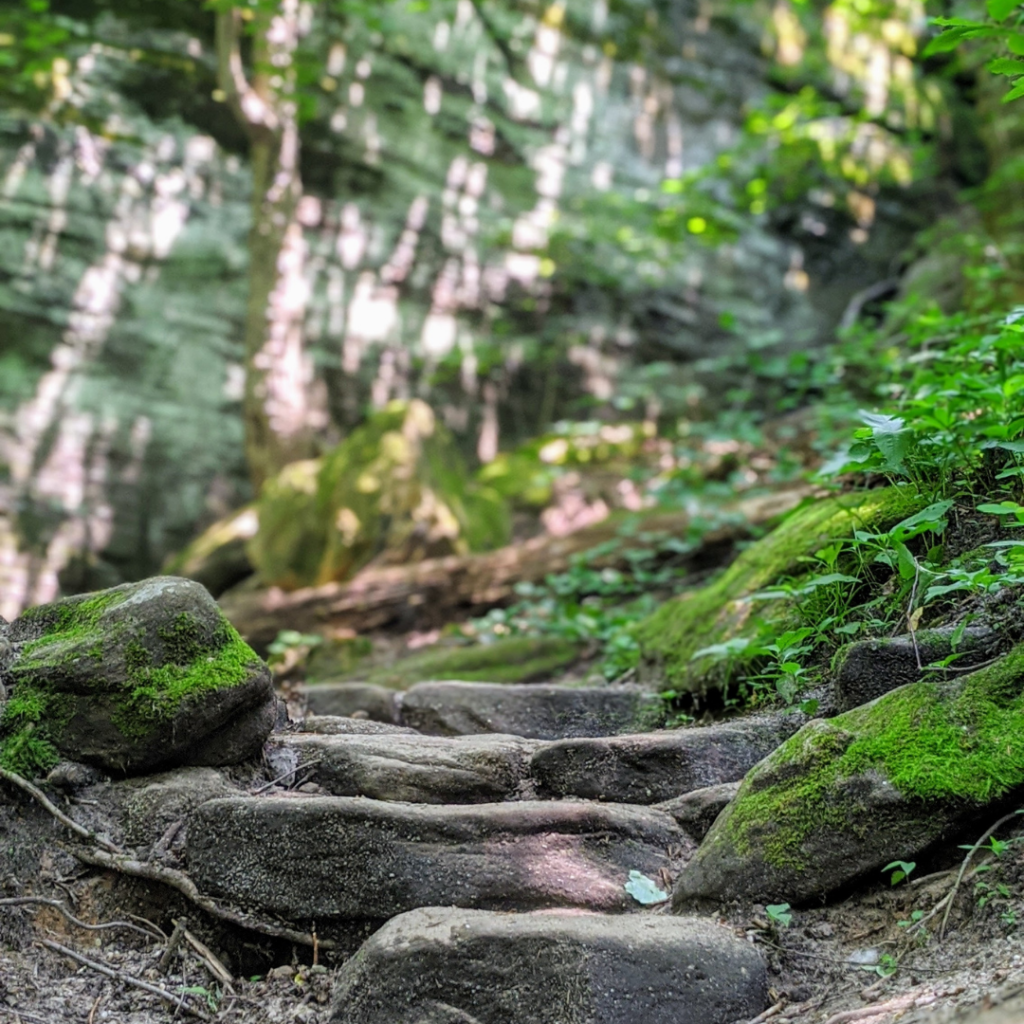
NPS Sites
LGBTQ+ historical sites tell stories of change and provide hope for a better tomorrow.
Stonewall
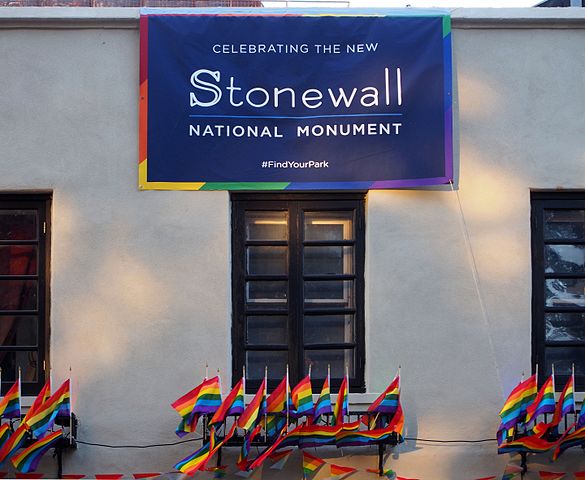
In 2016, Stonewall officially became a national monument. Located in New York’s Christopher Park, Stonewall is widely recognized as the birthplace of the modern LGBTQ+ rights movement.
In 1969, many LGBTQ+ establishments in the area surrounding Christopher Park experienced harassment from law enforcement. On June 28, 1969 the Stonewall Inn was raided by police at 1:30 a.m.
“Following what at first appeared to be a routine raid, a crowd gathered outside to watch for friends in the bar. But as police vans came to haul away those arrested, the crowd became angry, began throwing objects, and attempted to block the way. The crowd’s aggression forced police to retreat and barricade themselves inside the Stonewall Inn. Onlookers joined in and attacked the bar with pennies, metal garbage cans, bricks, bottles, an uprooted parking meter, and burning trash. The confrontation grew as the fire department and the NYPD’s Tactical Patrol Force, trained for riot control, joined police reinforcements sent to the scene.”
From NPS website
The riot lasted several days, involved thousands of people, and is still recognized as an essential and pivotal moment in LGBTQ+ history.
The National AIDS Memorial Grove
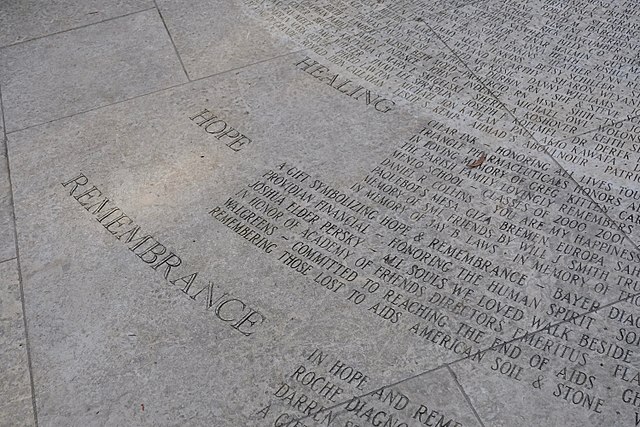
The National AIDS Memorial Grove in San Francisco has the following focus: “By sharing the story of the struggle against HIV/AIDS, we remember, in perpetuity, the lives lost, we offer healing and hope to survivors, and we inspire new generations of activists in the fight against stigma, denial, and hate, for a just future.”
This monument was first conceptualized in the late 1980s during the midst of the AIDS epidemic. Many people felt like they had nowhere to go to let out their grief and needed a peaceful place to collectively remember those lost. The idea gained public interest and support and many people joined together to restore a rundown site in Golden Gate Park. In 1996, the Grove was designated as the nation’s official AIDS memorial. Now a serene and beautiful space in the park, it is a scene of hope and remembrance.
Nob Hill
Nob Hill was the oldest operating LGBTQ+ nightlife establishment when it closed its doors in 2004. Originally opened in 1957, this two-story brick building catered to gay Black men during a period where racial discrimination was still legal in Washington, D.C. This was a very important site as it gave men who were often excluded from predominantly white gay establishments a place to socialize. Nob Hill was part of the National Park Service’s Historical American Building Survey.
To learn more about important sites in American LGBTQ+ history visit the National Park Service website and Historypin.
People
Many people have played a part in the fight for LGBTQ+ rights in America, and we wouldn’t be where we are today without them. Here are just a few individuals who sparked change during their time.
Esther Lape
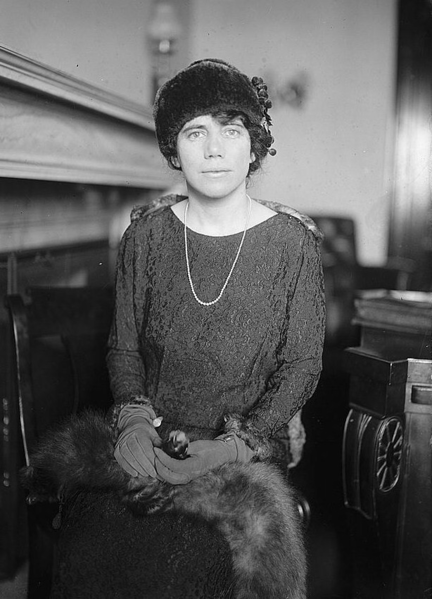
Esther Lape played an important role in LGBTQ+ history and Women’s Rights history. A known journalist, researcher, and publicist, Esther was one of the founders of the League of Women Voters. She was always involved in politics throughout her life and fought for many issues from being a part of the New Women Movement to proposing better healthcare. Her long term partner was Elizabeth Read—Eleanor Roosevelt’s personal attorney.
Pauli Murray
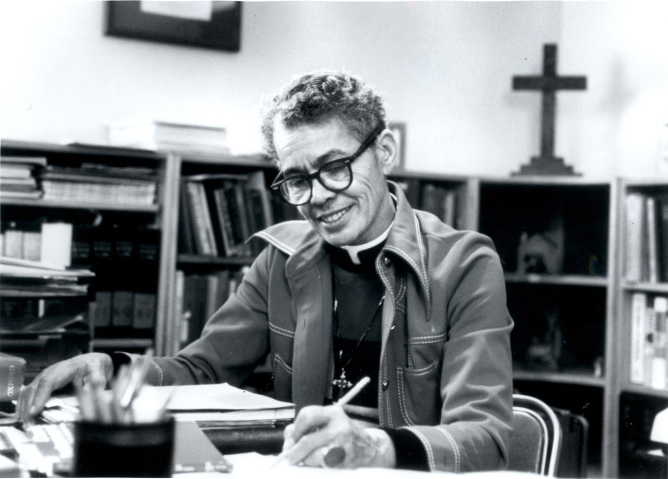
Another notable name in activism is Anna Pauline “Pauli” Murray. While attending Hunter College, Pauli struggled with gender identity and soon changed her name to be more androgynous. They were very active in organizations such as the Works Projects Administration and the Workers Defense League. Pauli’s writings were published in many magazines, including one by the National Association for the Advancement of Colored People.
Pauli became involved in the civil rights movement, having been denied by all-white graduate school and arrested for refusing to move to the back of a bus. Enrolled at Howard University, they hoped to become a civil rights lawyer. Pauli later joined the law firm Paul, Weiss, Rifkin, Wharton, and Garrison where they met their lifelong partner, Irene Barlow. Pauli’s work on gender discrimination was the inspiration behind Reed v. Reed, which ruled that women could not be excluded as administrators of estates on the basis of gender.
Marsha P. Johnson
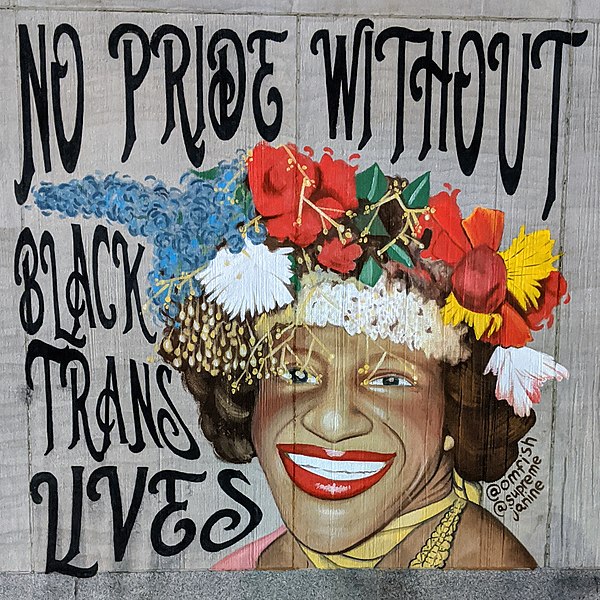
As a woman assigned male at birth, Marsha grew up in a town that had no tolerance for LGBTQ+ people. After graduating high school, she soon fled to New York City to live more freely as her true self. Marsha was a regular at the Stonewall Inn and was present at the riots. Along with her good friend Sylvia Rivera, Marsha cofounded STAR (Street Transvestite Action Revolutionaries), a shelter and social space for the houseless trans community and LGBTQ+ youth. Marsha is remembered for her immense generosity and warmth.
Visit the National Park Service website to learn more about LGBTQ+ Heritage.
